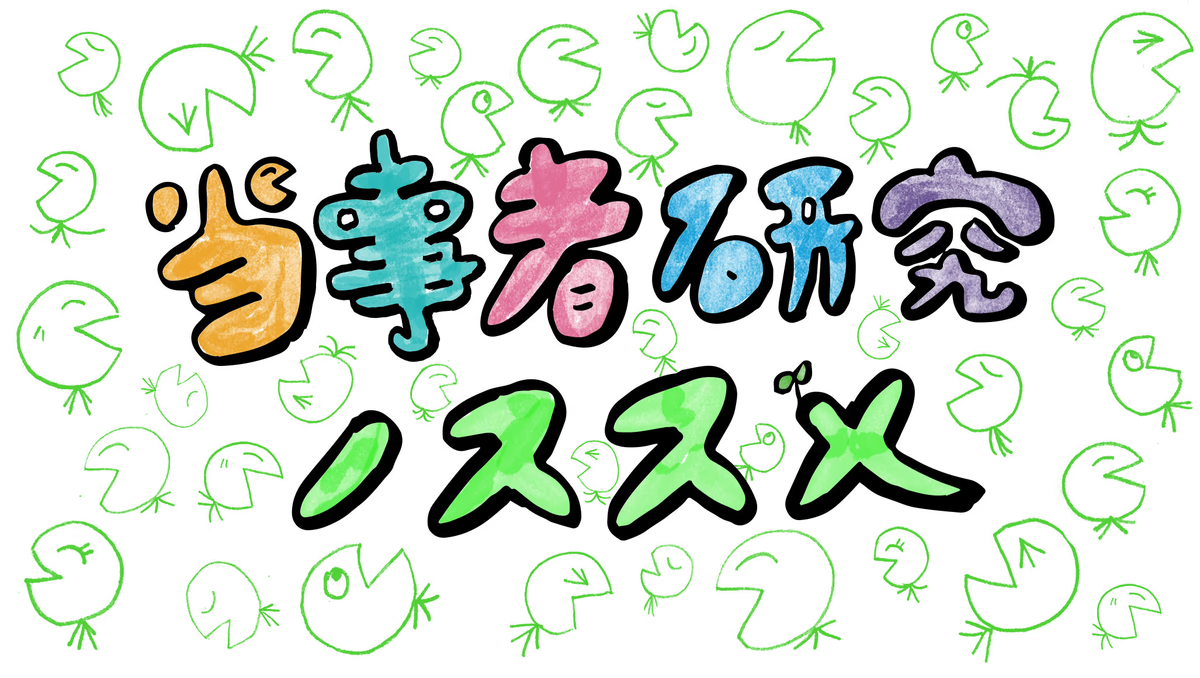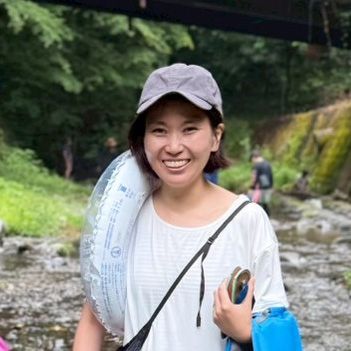こんにちは。中庭です。
私の身の回りではよく、物事をいかに「自分事」化して考えるか問われることがあり、仕事でも「当事者意識を持とう!」という声をよく聞きます。ものさすサイトでも「一人称」で語るという唯一のルールですし、主語は「私」。「自分」を起点に話す事が重視されています。
自分ごと、大切です。自分ごとで物事を考えないと、本気エンジンかかりません。
自分ごと、自分ごと…。気づいたらCPUをフル稼働させていて、あらゆることが自分ごと祭りです。大切なことなんだろうけど、なんか疲れるなぁ…。
そんな中、去年から追い続けている「当事者研究」の勉強会で知った「他人事メソッド」にはっとしました。これだけ「自分ごと」を期待される世の中で、あえて「他人ごと」化するメソッドなんて…?!
そんな時代の逆を行く(?!)当事者研究には、「働く、暮らす、生きる」(どこかで聞いたフレーズ)いろんな場面で新しい見方のひとつになるかもしれません。今回は、経験と工夫がたっぷり詰まった当事者研究の一端でもご紹介できればと思います。
目次
当事者研究とは?(wikiモード、ときどき主観)
当事者研究とは、北海道浦河にある〝べてるの家〟が発祥で、精神疾患を持った方たちの自助活動としてはじまりました。
べてるの家とは、ソーシャルワーカーの向谷地生良(むかいやち いくよし)さんが中心となって立ち上げた、統合失調症やアルコール依存症などを持った人たちを中心に、地元の特産品の昆布商品をつくって売って共同生活もするコミュニティのような場所です。
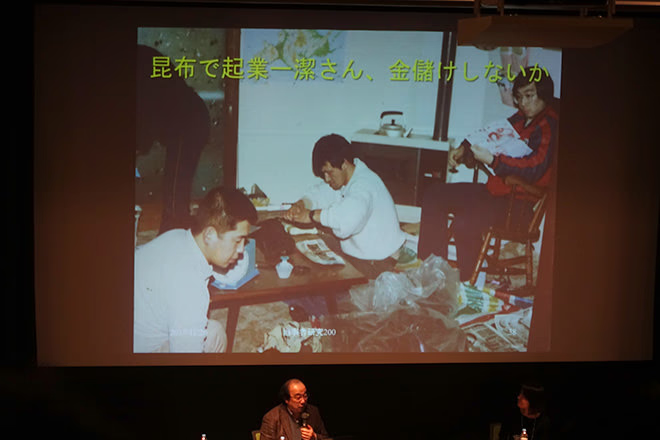
べてるの家立ち上げ当時の写真。「金儲けしないか?」と向谷地さんが声をかけると、メンバーは目をキラリとさせたとのこと。(2017.11.26 『とびらー×べてるの家』で話す向谷地さんのスライドより)
べてるには秀逸な格言のようなものがいくつもあって、「安心してサボれる会社づくり」「手を動かすより口を動かせ」「三度の飯よりミーティング」「順調に問題だらけ」「ホップ・ステップ・ダウン」「弱さの情報公開」「べてるに来れば病気が出る」…。あげたらきりがありませんが、これだけで、どれだけユーモアに溢れた団体か伝わりますでしょうか?大きな苦労を抱えている人達が、なぜにこんなに明るく楽しそうなのか…。
統合失調症をもった方は、〝幻覚・幻聴〟などの自分の経験を正直に人に語ると、変わっている、異常、怖い、などと思われ、経験自体が否定されてしまうことが多々あります。そのことで他人はもとより、自分自身との関係性も難しくさせ、多くの生きづらさを抱えることになります。
人にも自分にも否定され続け、扱いづらかった経験を、「研究」という形でとらえなおそうとしたのが「当事者研究」のはじまりです。今まで人に理解してもらえず、自分に癒着してきた苦労を〝研究テーマ〟として表現したとたん、不思議と他人にも自分にも触れる問題になりました。
「当事者研究」の醍醐味は〝苦労を消す〟ことではなく、〝苦労を扱う〟〝苦労とつきあう〟方法をみつけることです。これまで精神医療の専門家は、苦労(症状)を「ただ取り除く無意味な症状」※1 として治療対象にしてきましたが、症状にはその人の抱えるこれまでの人生、社会のひずみや歪みなども反映されていたりします。その背景をも〝なかったこと〟にし、過去を消して人生を進めることが果たしてできるのでしょうか。
苦労には多くの示唆が含まれています。苦労を消すのではなく、つきあう方法を探し、トライ&エラーを繰り返す。大変なことだと思いますが、何度も苦労がやってくるとしても快復し続ける、しいては本当の意味で生きていく力をつけることにつながるのではないか…。当事者研究には、自分を助け、生きるための工夫がたくさん詰まっています。
今ではべてるの家に止まらず、依存症、発達障害、吃音、聴覚障害を抱えた人から、ジェンダーや子どもをめぐる問題など、あらゆる困りごとを持った人たちに当事者研究が実践されはじめています。
そしてこれは特別な人たちのものではなく、人の在り方を捉え直す方法として、こどもも大人も、学生も社会人も、みんながおこなえる研究なのです。
中動態と当事者研究
べてるの家の向谷地さんは、べてるのメンバーが放火したことを、「〇〇さんが放火した」という言い方ではなく、「放火現象が起こった」と表現します。
これは一体どういうことなのか。
まずこの言葉は「誰の責任なのか」の問いを除外し、〝出来事〟のみを語っています。なぜなら「責任」を前面に出した途端、議論はストップし、語り合う場を奪ってしまうからです。
当事者研究でも、誰かの「意志」や「責任」の所在を俎上にあげたとたん、語るのが困難になることを研究するため、〝誰のせい〟かは問いません。そもそも誰の「意志」なのかは、ここでは問題にならないのです。
しかしながら、私の身の回りでは(おそらく世の中的にも)「自分から動く」「積極的にやってみる」など、〝意志〟を持って〝能動的〟に動くことが是とされています。逆に受け身の姿勢は、「あいつは弱気な姿勢だ」「責任感がない」などと批判の対象になったりします。
とはいえ、一体どれだけのことが、誰かの意志だけで行われたと言いきれるのでしょうか。
例えば、仕事中に居眠りしてしまった人はどうでしょう。打ち合わせ中であればかなりバツが悪いです。ただし、寝不足の原因が、前日にゲームをやりすぎて夜更かししたためなのか、はたまたチームののっぴきならない案件を徹夜で手伝ったためなのかで、その人に対する周囲の責め方も変わってくるでしょう。
また、もう少し複雑な話で、アルコール依存症の例があります。アルコール依存患者がお酒に手を出すことを、周囲は〝意志が弱い〟とみなし、本人を責めるでしょうか。依存症におちいる方には、貧困、虐待、その他それぞれ複雑な背景が絡み合っていることが多いです。その場合、お酒に手を出すことが本人の意志だと、はっきり言うことができるでしょうか。
身の回りには、深刻さの度合いはあれど、似たような事態はたびたび起きます。その時、行為の主体にただ責任を負わせるのは、あまりにも短絡的です。「自己責任」という言葉も時々怖い言葉だなと思います。当事者研究では、「責任」を誰かひとりに所属させることはしません。
哲学者の國分功一郎さんの『中動態の世界』という本※2があります。そこには、中世ヨーロッパの時代には能動でも受動でもない、〝中動態〟という第三の態があった、と書かれています。
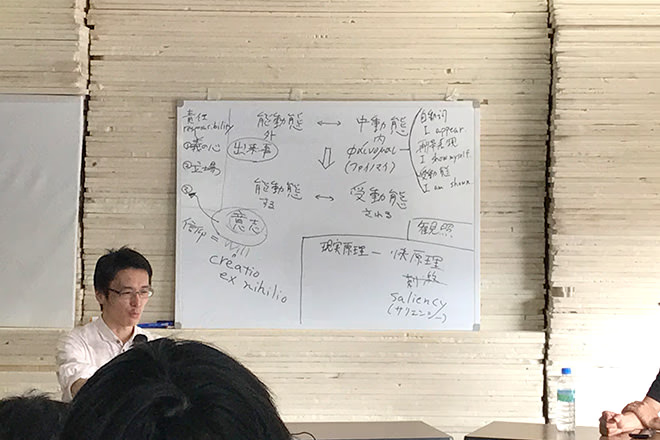
國分功一郎さん(左)が中動態を解説。所沢の給食センターで行われた現代アートの企画展『引込線2017』のシンポジウムにて。
私たちの暮らす社会では、何かの行為があった時に、誰が「した」、もしくは「された」かが問われ、「責任」の所在を常に求められます。しかし、すべてを「する/される」に分けることができるのか、という問いがこの本には書かれています。
例えば國分さんがよく例に出すのは、「私が誰かを好きになる」ことについて。國分さん曰く、「さあ、これから私はこの人を好きになるぞ」と能動的になったり、誰かに「おい、今からこいつのことを好きになれ」と言われて受動的に起こる気持ちではない、と。
よくよく考えると、世の中にはこういった能動とも受動とも取れない現象がたくさんあります。
そのことをあぶり出したのが「中動態」という考え方です。
そもそもなぜ、社会はすぐに「する/される」に分けたがるのでしょうか?その仕掛けは文法の中にあると本にはあります。
今わたしたちの使っている言語は、動詞を「能動態/受動態」で判別します。
例えば、英語で「私が現れる」ということを表現するとき、「I appear」。言い換えると、変な言い方かもしれませんが「I am shown」とも言えます。この「I appear/I am show」は「意志を持った人は誰か」を基準に「能動態/受動態」に分けられます。
しかし、古代ヨーロッパ時代は「能動態/中動態」という異なる基準で分けられていました。書籍に出てくる言語学者バンヴェニストの話によると、以下のような分け方です。
- 能動は「動詞は主語から出発して、主語の外で完遂する過程」→ 主語が過程の外にある
- 中道は「動詞がその座となるような過程」→ 主語が過程の内にある
「能動態/中動態」の分け方は、主語の意志の有無ではなく、主語がその過程の外か内かで分けられます。ここでは、「I appear」も「I am show」も同じ中動態とみなされ、兄弟のような関係だったそう。

2017.10.10 WIRED CONFERENCE 2017「WRD. IDNTTY.」にて行われた國分功一郎×熊谷晋一郎のトークセッション『「中動態」と〈わたし〉の哲学』のスライド。
それがいつしか「能動態/受動態」の文法が台頭し、物事の考え方の基準が「意志」の有無となり、「I appear」も「I am show」も無理やり「能動態/受動態」に分けられてしまったとのことです。
こうした言語を通して物事を考える私たちは、いつしか意志と責任を常に〝尋問〟するようになりました。
当事者研究では、行為を「現象」としてとらえ、「意志」を前景化しません。消えかけた「中動態」に戻ったような空間です。
最初に述べた向谷地さんの言う「放火現象」も、中動態的な態度で、ニュートラルに語れる場をつくりだしています。
自分と癒着した失敗や苦労を語るには、語れる対象にするための工夫が必要です。その工夫が、中動態的な言語空間を作り出すことだったのでは、思います。
「一人ひとりで、ともに」研究する
〜当事者研究スタイル例〜
ここからは、具体的に当事者研究のスタイルの一部を紹介します。
1、みんなでわいわいグループ研究
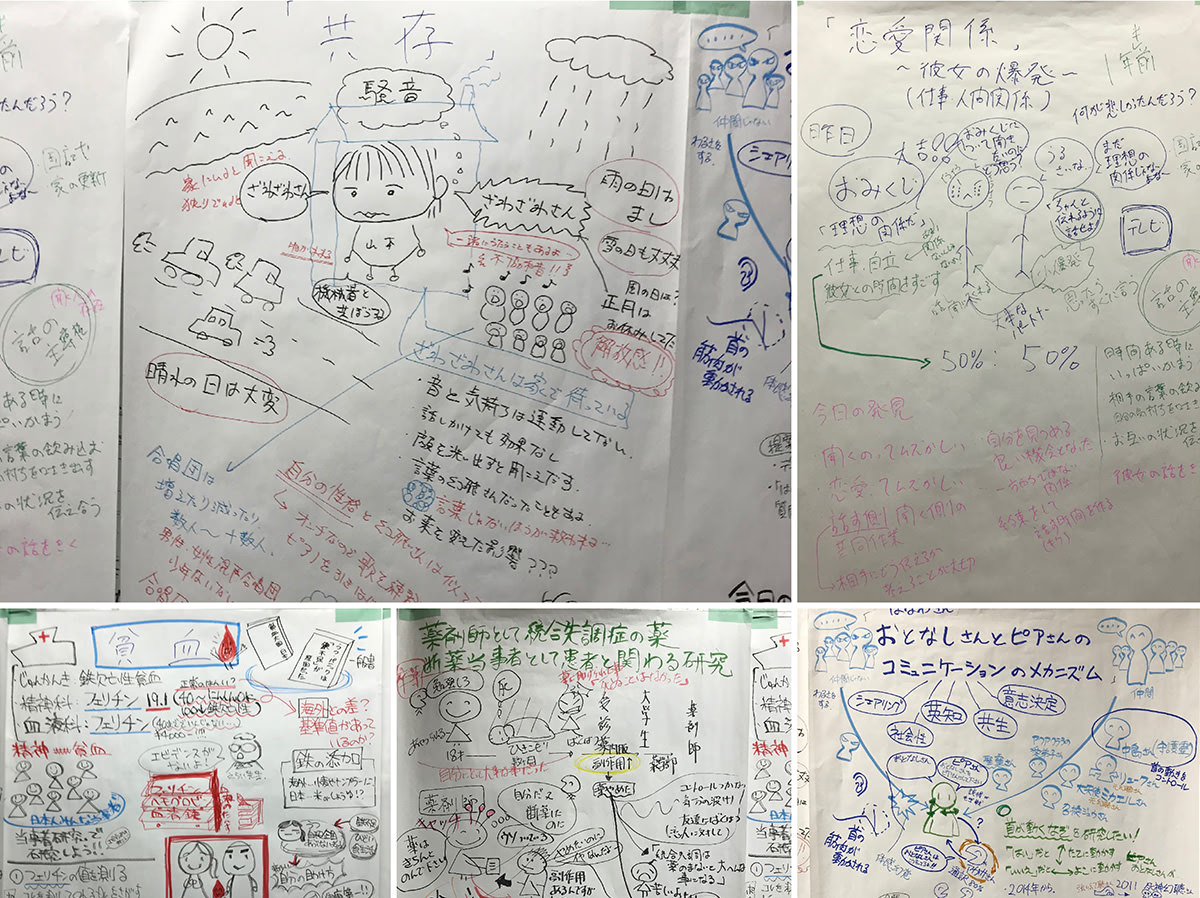
模造紙に書かれた当事者研究での研究結果たち(2018年新春当事者研究集会@横浜にて)
当事者研究発祥の地、べてるの家では「当事者研究ミーティング」というグループ形式の研究があり、もっともメジャーなスタイルです。ここで綾屋紗月さんの『当事者研究をはじめよう!』※3 を参考にその様子を紹介します。
べてるの場合、実施される環境は以下のような状況が多いようです。
- 参加人数:その日に参加したいと集まったメンバーが10〜20人程度。
- 進行役:当事者自身と健常者スタッフの2名が担当。
- 必要なもの:ホワイトボード
- 座席:輪をつくる
- 広さ:ロールプレイできるくらいの空間があると良い
- 所用時間:1時間を超えない程度
また、進み方としては以下のような流れになっています。
- 参加者全員が自己紹介を兼ねて気分や近況を話す。
- 当事者研究のルールや趣旨の説明を行う。
- 当事者研究のメンバーが研究したいテーマについて語る。
- 進行役は質問しながらホワイトボードに記録をおこなって行く(記録係は進行役以外の人でもよい)。
- 参加者も自由にわいわいとコメントや質問をしていく。
- やりとりが済んだところで当事者が発見したことや感想を語る。
- 進行役が感想やまとめを語り、終了。
研究テーマの伝え方は口頭で語る以外にも、図やイラストを描いて説明したり、ロールプレイで状況を再現するなど、バラエティ豊か。上記に手順をあげましたが基本は「自由」です。
向谷地さんが当事者研究で大切にしていることは「経験を既成概念でとらえない」とのことで、これが結構難しい…。「リフレクティング」という話の聞き方があるのですが、それがかなり近い聞き方だと思います。(リフレクティングについては、この記事の最後に紹介します。)
語り手の経験を既成概念でとらえず、その人が見ている世界観にいかに近づけるか。当事者研究では聞き手のあり方も重要になってきます。
2、もう「自分事」はいやだ!「他人事メソッド」を考える
次に、今年の6月16日に行われた『べてるの家の当事者研究実践講座イン町田』で、大矢英明さんが講義した「他人事メソッド」が、すぐに始められる当事者研究の具体的な手法になるのではと思い、紹介します。
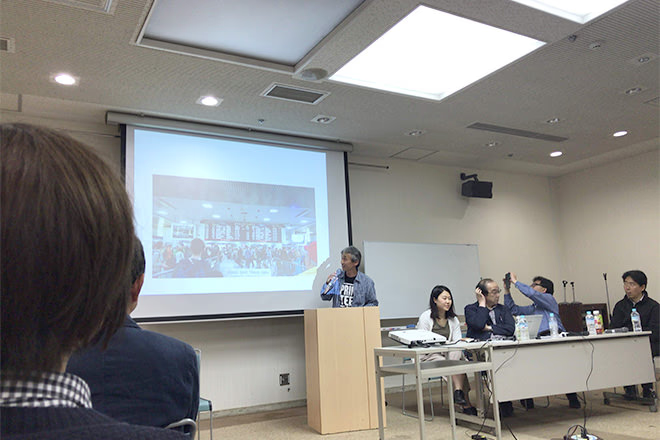
他人事メソッドを発表する大矢さん
高校生の時に幻聴が聞こえはじめた大矢さん。「他人事メソッド」を発見したのは、念願かなって「Bruce Springsteen (ブルーススプリングスティーン)」のライブに行くために渡米したときの出来事がきっかけだったそうです。
ライブ会場はコネチカット州。成田からニューヨークまで14時間飛行機に乗り、その後は電車で向かう予定とのこと。その日、大矢さんは飛行機の中で眠れず、ニューヨークの駅では、電車が遅れ、知らない国でひとり、疲労困憊で心が折れそうになったそうです。そのとき、大矢さんはふと、こんなことをつぶやきはじめました。
「大矢君、立っているのが辛そうです」
「今にも泣きそうな顔をしていますねぇ」
「大矢君、もう家に帰りたそうです」
「いえ、家に帰れません。ここはアメリカです。ホテルに辿り着くしかないです」
「なんとかなるでしょう」「そうですか?」
こうやって、自分の状況を他人事のように実況中継しはじめると、ふうっと気持ちが楽になったそうです。
他人事メソッドはこうやって生まれました。
他人事メソッドとは、自分のことをスポーツ中継の選手のようにナレーションをつけることで、自分を他人事のように捉えて距離を置き、客観視するような行為です。
他人事メソッドを行う時のコツは、
- 三人称で語る
- 体の動きを説明する
- 自分の考えはあまり説明しない
- まわりの様子も客観的に説明する
- 解説者も入れて、褒めるコメントを入れるとなお良い
- 短いセンテンスで
といったことが挙がりました。
当日の講座の動画
私も実践してみたのですが、確かに自分を客観視することができます。苦労や困りごとの真っ只中にいると、それ自体に自分自身が囚われ、逃げ場を失ったり、他人を介入させることが困難となることがありますが、〝自分事を他人事化するメソッド〟は、状況と自分を分離させ、冷静に自分を見つめたり、他の人と共有することができるひとつの方法だと思います。
私も仕事が大変なときなど、普段から試してみようかと…。(周囲に迷惑にならないレベルで…!)
「生きづらさ」からの〝逃亡〟ではなく、
〝表現〟としての研究
私が当事者研究を知ったきっかけは、西村佳哲さんの著書『みんな、どんなふうに働いて生きててゆくの?』※4 にあった、向谷地生良さんへのインタビューを読んでから。「生きることの苦労の芯に一度降りてみたかった」という向谷地さんの言葉に電流が走って以来、べてるの家に魅了され、去年はべてる祭りにもいきました(レボートはこちら。前編・後編。最初に言っておきますが2編もあって長いです)。そこで出会った「当事者研究」が、知れば知るほど深く、興味はつきません。ある種自分にとってのサプリメントのようなものにもなっています。それは、当事者研究が「自分の言葉をとりもどす」行為だからです。
なにより当事者研究は楽しい、ということがとても重要です。当事者研究で語られる話し手の苦労は毎回独特で、往々にしてユーモアがあり、時には文学的で創造的。誤解を恐れず言うならば、大江健三郎の小説を読んでるような気になることさえあります。(単に大江ファンなのでそう思っただけですが…。)
当事者研究はその人の現実の苦労を語る場なので「小説」に例えるのは不謹慎かもしれません。ですが、知れば知るほど創作的な範疇ももあると感じていて、あたかも物語の主人公のように自分と距離を置き、外の人に伝える、というのは表現行為でもあるからです。それはとても楽しいことです。
表現活動は、「能動/受動」でのみ展開される空間では少し窮屈かもしれません。「意志」を起点に、なんでもかんでも誰かのものにしたがる、果ては行為までも誰かの所有物に(國分功一郎さん曰く「行為の〝私有財産化〟」)しようとする中で、のびのびと声を発することができるでしょうか。
そういう意味では、「意志」を起点としない中動態的当事者研究の場は、あらゆる声が許され、多層的で表現豊かで創造的な空間だとも言えるのです。
この〝表現〟としての当事者研究を、日常にも落とし込めないかとよく考えています。
なぜなら、苦労や困難を抱えているのは何か特別な人たちだけではなく、誰もがそれぞれ持っているからです。例えば、仕事がつらい、家族とうまくいかない、お金がない、パワハラ、セクハラ、依存関係、いじめ、劣等感、自分だけが何度も陥る失敗…。あげたらきりがないですが、外へ表現したら、案外解決策が導き出せるかもしれません。
ささいなことでもいいんだと思います。当事者研究が何かを考えるヒントになり得ます。当事者研究をとおして、ちょっとでも生きやすく、楽しく、おもしろくなればいいなと思っています。
おまけ:
「みろ・きけ・考えるな」のリフレクティング
〜当事者研究を楽しむための聞き方のヒント〜
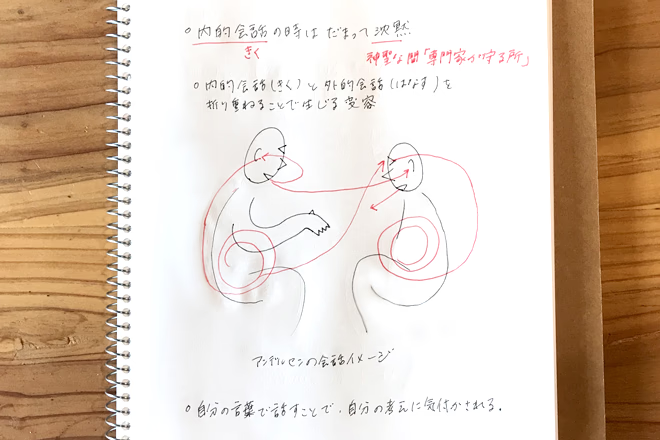
2018.8.12 に行われた矢原隆行さんの「リフレクティング」ワークショップでのノート。アンデルセンが考える会話のイメージ図
リフレクティングとは、何事かをじっくり聞き、考えを巡らし、考えたことを相手に返すことを意味します。このリフレクティングの聞き方が、当事者研究での聞き方に近いと思い、紹介します。
リフレクティングのはじまりは、ノルウェーの精神科医トム・アンデルセンが、精神疾患を持った患者への家族療法として提唱しました※5。
それまで治療時の面談は、患者と面接官の一対一のやりとりが主流であり、治療の施策を練る専門家(医者やセラピストなど)たちが、患者を一方的に観察し、一方的に患者に治療方法を伝えます。専門家たちがどんなプロセスを経てその治療法にたどり着いたのか、患者は知ることができません。
アンデルセンは、そういった状態にリフレクティングを取り入れ、専門家たちがそれについて話し合う過程をオープンにし、患者やその家族は治療内容が導き出される文脈を知ることができるようにしました。なおかつ意見や感想を言うことも許されます。このことで、観察される側=患者、観察する側=医療専門家という固定化した関係を脱し、両者がどちらにもなりうる新しい治療関係を築いたのです。
リフレクティングをおこなうことで、患者自身も多様な考えを巡らすことになり、対話の上で納得した治療方法を試すことができるようになりました。
アンデルセンは、リフレクティングにおける聞き方について「見ろ・聞け・考えるな(分析するな)」と語っているそうです。相手の話を自分のフレーム(例えば「内面化された専門職のフレーム」)で見ず、〝ただ聞き〟、話し手の世界観にいかに近づけるかが大事だと言います。(臨床家のグーリシャンはこれを「無知の姿勢」とも言います。)
相手の話を聞くとき、気をつけないと自分のフーレムで相手の話を解釈してしまい、結果、〝聞けていない〟ということはよくあることです。当事者研究でも、いかに発表者の見ている世界観にいかに近づけるかが大切です。
まずは相手の世界のまま見て、考えるのは後、考えたらリフレクションとして話し手に返す、また聞く、ということ繰り返すことで当事者研究のアイデアは多層的で豊かになものになっていくと思います。
参考文献
※1 熊谷晋一郎 著「みんなの当事者研究」(『みんなの当事者研究』金剛出版 2017 より掲載)
※2 國分功一郎 著『中動態の世界 意志と責任の考古学』医学書院2017
※3 綾屋紗月 著「当事者研究をはじめよう!」(『みんなの当事者研究』金剛出版 2017 より掲載)
※4 西村佳哲 著『みんな、どんなふうに働いて生きててゆくの?』弘文堂 2017
※5 矢原隆行 著『リフレクティング』ナカニシヤ出版 2016
